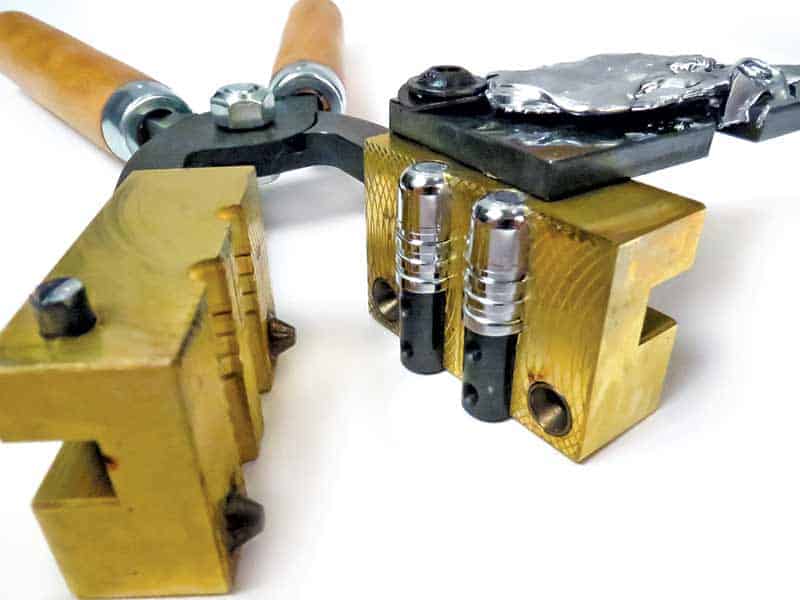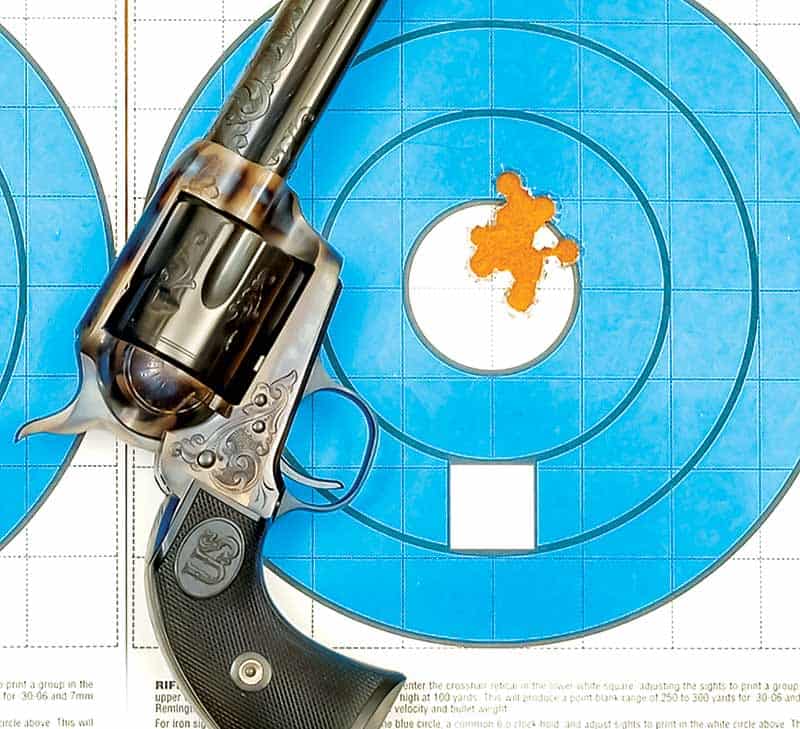Consider Casting
The purpose of guns and cartridges is to direct a bullet into a target. In other words, without bullets, guns are useless. Shooters in this COVID-19 era of almost non-existent components are learning this the hard way. Since 1966, I’ve never been without bullets for my handguns and plan to never be without them. In just the first three months of 2021, I’ve cast over 3,000 handgun bullets for various writing projects in calibers .32, .38/357, .38-40, .41 Long Colt, .44 Special, .44-40 and .45 Colt. I enjoyed every minute of it.
Back when I became a .38 Special reloader, in my locale there were no handgun bullets to buy. None! Nada! Some older gents in the local gun club told me if I was going to shoot, I would have to cast. One guy sold me a cast iron lead pot for use on gas stoves for $10, and another for $7.50 sold me a Lyman single-cavity bullet mold with handles. I’ve owned literally hundreds of handgun bullet molds since, but don’t want any more single-cavity molds for handgun bullets. I may enjoy my casting sessions, but there’s a limit to my patience.
Universe of Casting
In terms of cast bullets for repeating handguns (excluding single shot pistols) we have a bewildering array of designs to choose from. They include shapes of full wadcutter (WC), semi-wadcutter (SWC), roundnose (RN), roundnose/flatpoint (RN/FP), hollowpoint (HP), hollowbase HB, plain base and gas-checked base.
So, what’s best? That’s an impossible question, but any of them is better than no bullets. Personally speaking, on my reloading bench I have dies for .32 Auto, 7.65 French Long, 8mm Nambu, 9mm Parabellum, .38 Super, .40 S&W and .45 Auto. Also on my loading bench are dies for 16 revolver cartridges. They range from .32-20 to .455 Webley. Some of those cartridges are loaded rarely, such as 8mm Japanese Nambu and .41 Magnum, but I still acquired molds for them. The flip side is I load .38-40 and .44-40 by the hundreds and thousands.
A For Effort?
The only handgun caliber with which I consider myself a failure with cast bullet shooting is 9mm Parabellum. My cast bullet luck with my current five World War II 9mm pistols and two submachine guns has ranged from barely okay to downright dismal. Groups are large, bullets sometimes tumble in flight and barrel leading is bad. Some manufacturers such as GLOCK recommend not shooting lead alloy bullets in their barrels. Fine. Drop in, aftermarket barrels are offered for lead bullet shooting in GLOCKs. If I had a GLOCK, I’d buy one of those barrels. Get this: The same poorly performing 9mm cast bullets when fired in my single Colt .38 Super of 1990s vintage shoot nicely. Go figure.
Successes
The best cast bullet accuracy I’ve ever gotten with semi-autos was with a Kimber Pro Compact 1911 .40 S&W. From machine rest using cast SWCs and RN/FPs it usually shot ragged clusters at 25 yards. I always use a hard alloy for semi-auto pistol bullets. They get slammed about a bunch going from magazine to chamber. Revolvers are a cinch. I always use a softer alloy for revolvers. Used to be .45 Colt gave me fits until I discovered Colt SAAs have 0.451″-barrel groove diameters but 0.456″ chamber mouths. Load 0.454″ bullets of soft 1:20 tin to lead alloy and .45 Colt SAAs become tack drivers. For cast bullet revolver loads over 1,250 fps I often use a gas check design.
A softer bullet often will compensate for mismatched revolver barrel/cylinder dimensions. I’ve come to favor the RN/FP design of bullet for most of those revolver cartridges. Used to be I’d avoid HP or HB cast bullet designs because they were only available in single cavity molds. Now I’ve discovered MP Molds where one can obtain multiple cavity HP and HB molds. I’ve used their four-cavity convertible .32-20 mold for both HPs and FPs and their two cavity .41 Long Colt mold for HBs.
If this column inspires you to run out and get a casting setup, save your gasoline. Along with everything else involved in reloading, casting stuff is in short supply. Hopefully by the time you read this the ammo, component and reloading equipment drought will be over. Just beware! It could happen again!
For more info: MP-Molds.com







